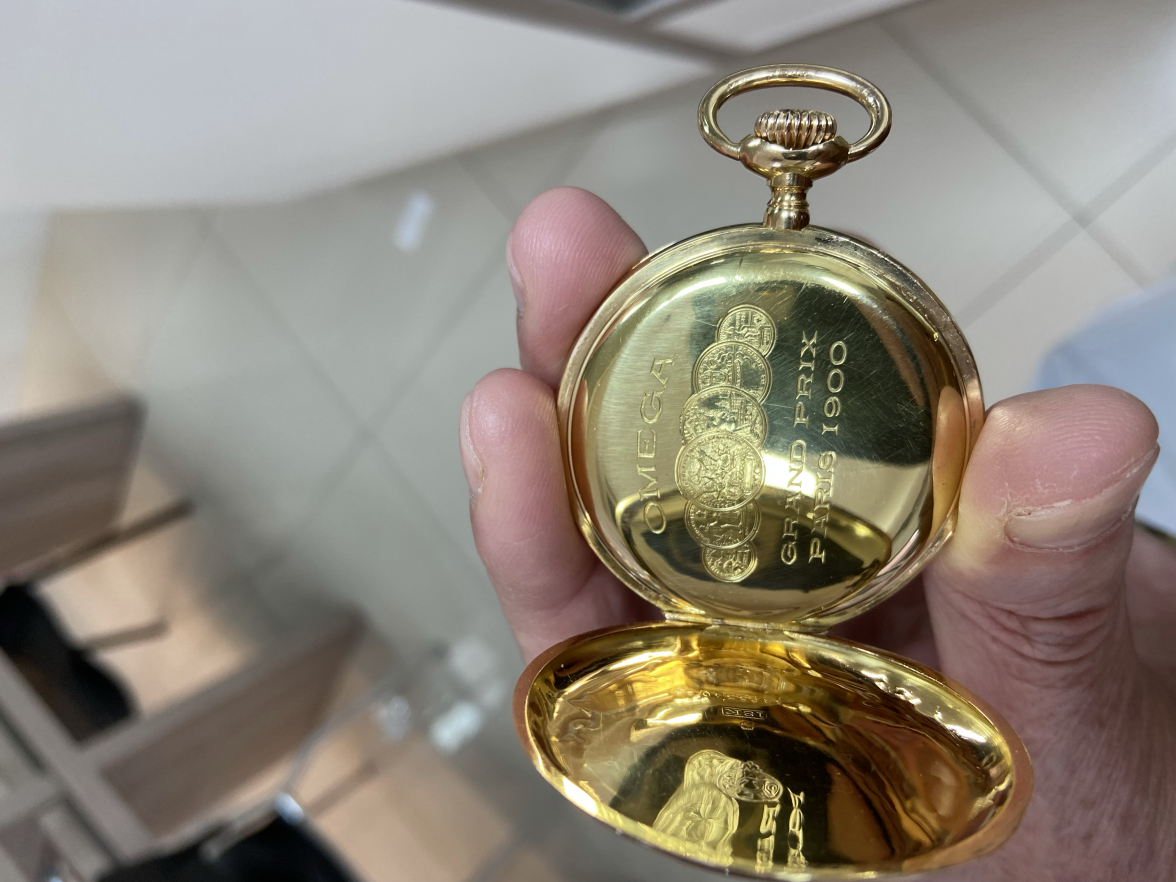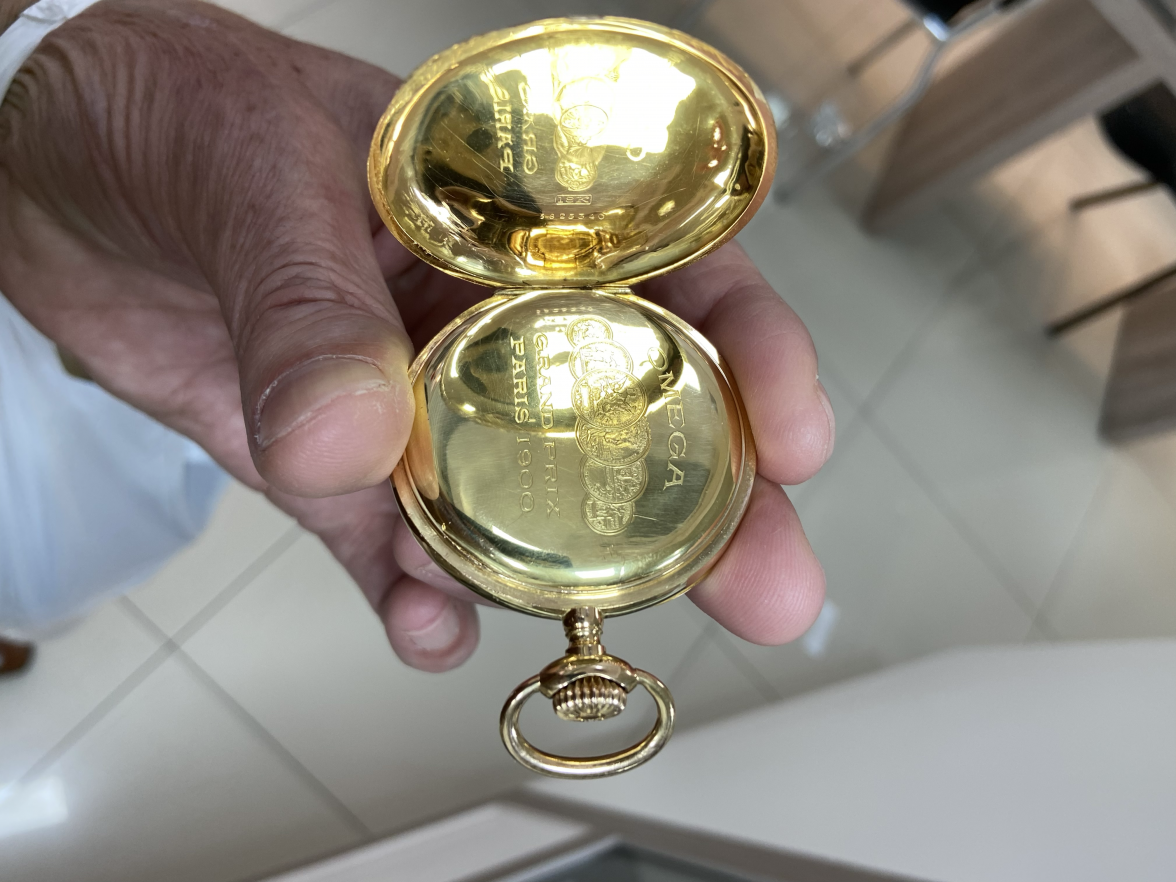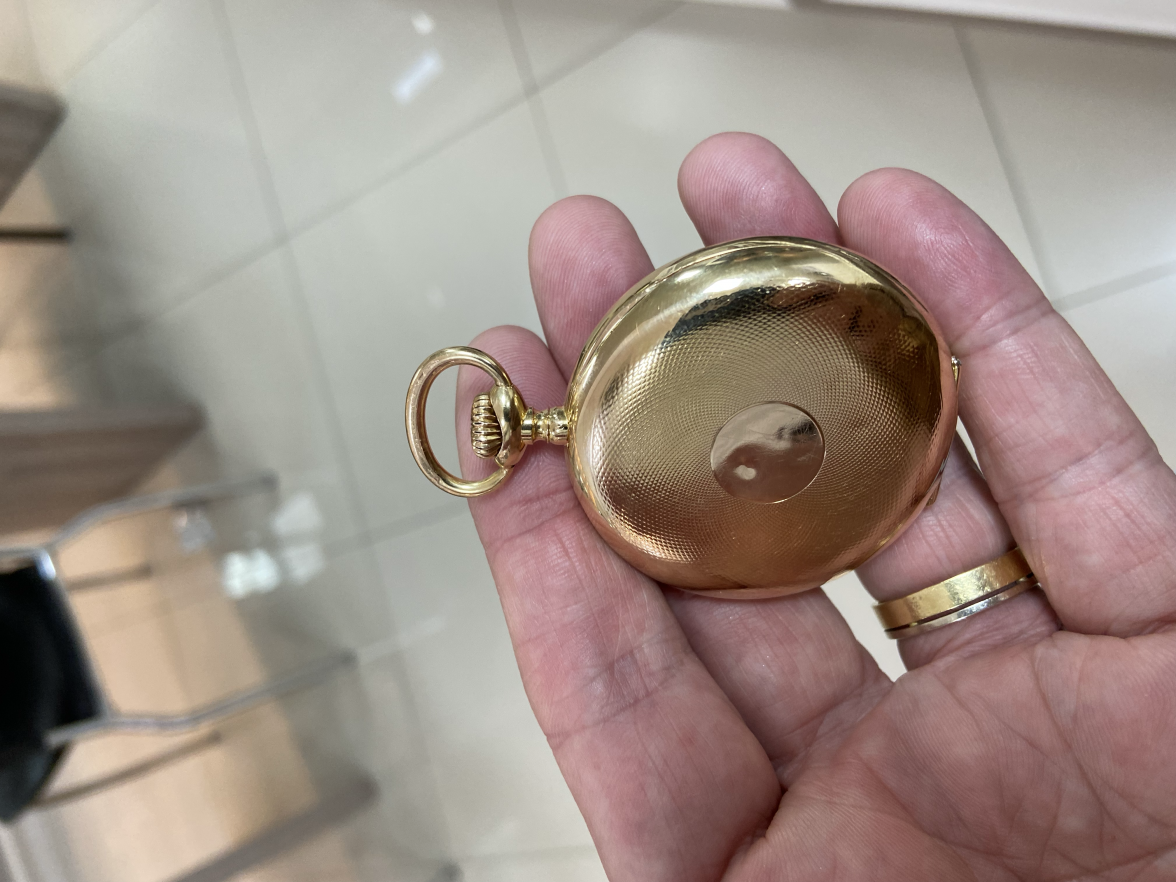MauricioNO
·Hi guys,
My knowledge about pocket watches is very very limited, as I never really paid much attention to it, until this guy showed up in my local watch guy shop, brought by an elderly lady, who wanted him to service it and try to sell it.
It seems similar to the one found on this post, coincidently also from a guy in Brazil https://omegaforums.net/threads/grand-prix-paris-1900-autenticity.65504/
If anyone of you have an idea on what price range would this be a good deal, and your thoughts on the watch and movement, please do let me know!
Here is a YouTube link to the video of the movement working:
Thanks!
My knowledge about pocket watches is very very limited, as I never really paid much attention to it, until this guy showed up in my local watch guy shop, brought by an elderly lady, who wanted him to service it and try to sell it.
It seems similar to the one found on this post, coincidently also from a guy in Brazil https://omegaforums.net/threads/grand-prix-paris-1900-autenticity.65504/
If anyone of you have an idea on what price range would this be a good deal, and your thoughts on the watch and movement, please do let me know!
Here is a YouTube link to the video of the movement working:
Thanks!




